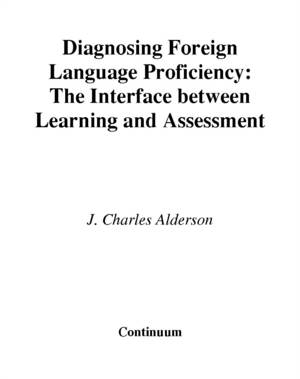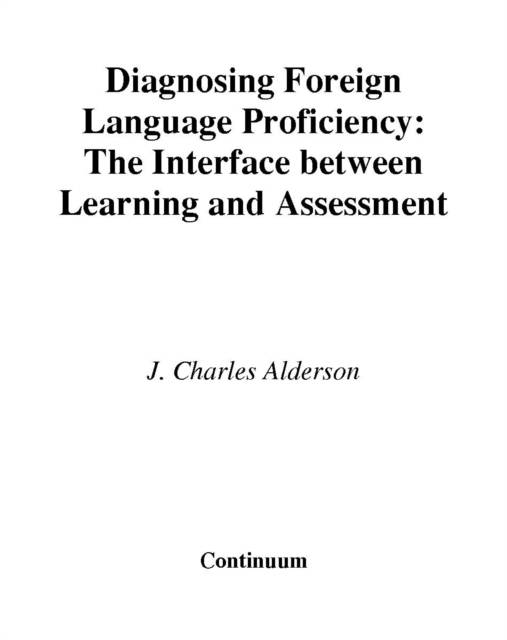
- Afhalen na 1 uur in een winkel met voorraad
- Gratis thuislevering in België vanaf € 30
- Ruim aanbod met 7 miljoen producten
- Afhalen na 1 uur in een winkel met voorraad
- Gratis thuislevering in België vanaf € 30
- Ruim aanbod met 7 miljoen producten
Zoeken
Diagnosing Foreign Language Proficiency
The Interface Between Learning and Assessment
J Charles Alderson
Hardcover | Engels
€ 440,95
+ 881 punten
Omschrijving
This book addresses the need for tests that can diagnose the strengths and weaknesses in learners' developing foreign language proficiency. It presents the rationale for, and research surrounding, the development of DIALANG, a suite of internet-delivered diagnostic foreign language tests funded by the European Commission. The word 'diagnosis' is common in discussions in language education and applied linguistics, but very few truly diagnostic tests exist. However, the diagnosis of foreign language proficiency is central to helping learners make progress. This volume explores the nature of diagnostic testing, emphasizing the need for a better understanding of the nature of appropriate diagnosis. The book starts with a debate about how diagnostic testing might most appropriately be developed. Charles Alderson argues that the field has neglected to construct diagnostic tests, partly because other forms of testing have dominated the field. Alderson examines how proficiency has been diagnosed in the key areas of language: reading, listening, writing, grammar and vocabulary. The value of self-assessment is discussed and exemplified as a key component in developing learners', and teachers', awareness of the complexity of language learning. The book ends with a consideration of and recommendations for future developments in the diagnosis of foreign language proficiency.
Specificaties
Betrokkenen
- Auteur(s):
- Uitgeverij:
Inhoud
- Aantal bladzijden:
- 286
- Taal:
- Engels
Eigenschappen
- Productcode (EAN):
- 9780826485038
- Verschijningsdatum:
- 1/11/2005
- Uitvoering:
- Hardcover
- Formaat:
- Genaaid
- Afmetingen:
- 161 mm x 241 mm
- Gewicht:
- 644 g

Alleen bij Standaard Boekhandel
+ 881 punten op je klantenkaart van Standaard Boekhandel
Beoordelingen
We publiceren alleen reviews die voldoen aan de voorwaarden voor reviews. Bekijk onze voorwaarden voor reviews.











